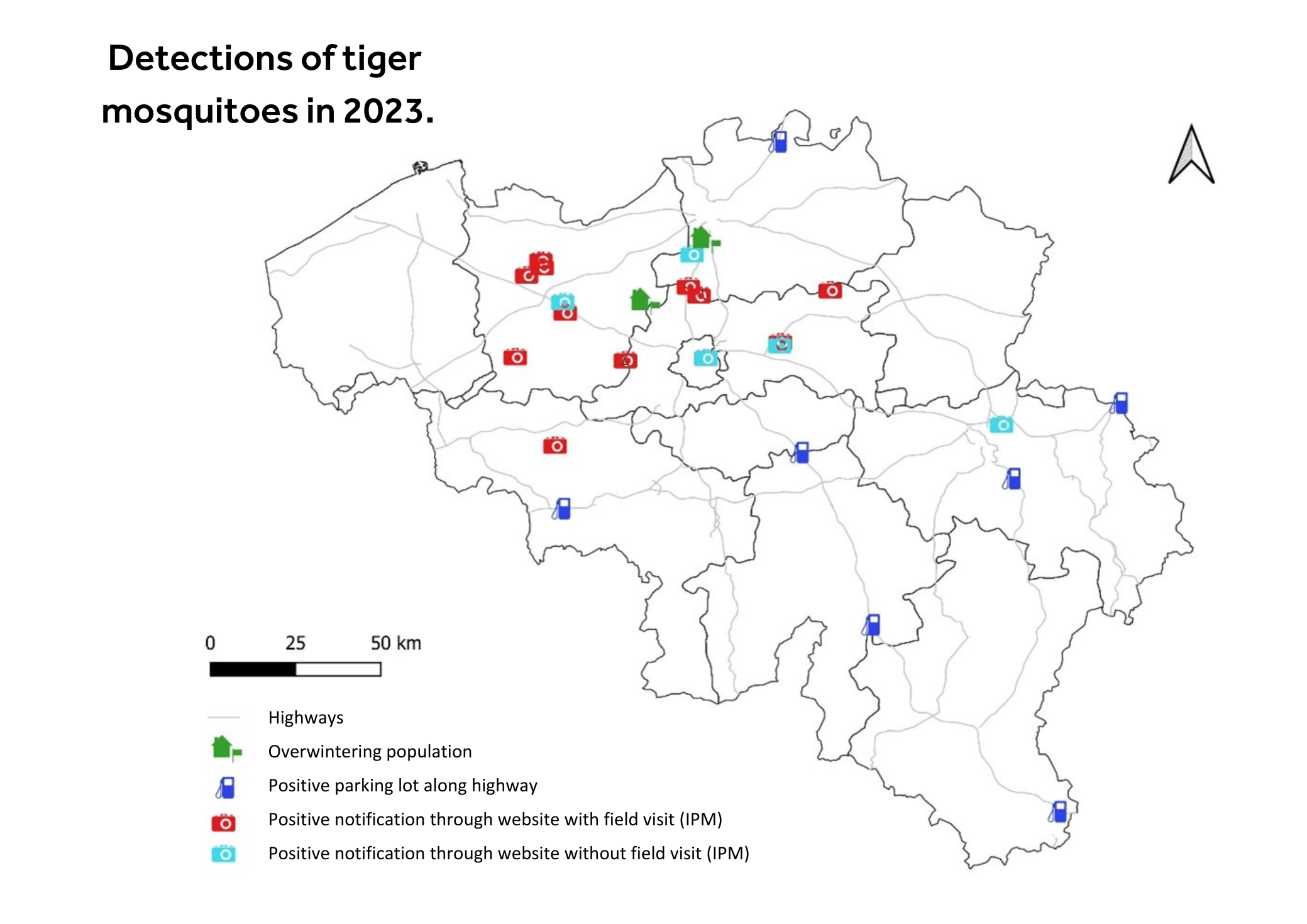The tiger mosquito, an invasive species with the potential to transmit viruses, is making significant strides in Belgium. In 2023 the Institute of Tropical Medicine (ITM) in Antwerp and Sciensano found the species in twice as many location compared to 2022. This is a concerning rise. The citizen science platform MuggenSurveillance.be plays an important role in this, and recorded positive reports for the first time in Brussels and Wallonia.
Last year, tiger mosquitoes were observed at 25 locations in Belgium, with 18 reports from citizens and an additional 7 discovered through monitoring at highway car parks. This marks a doubling compared to the 12 locations in 2022. In Lebbeke and Wilrijk, the mosquito was once again spotted, indicating that the mosquito species is overwintering in these municipalities. As the tiger mosquito continues its northern expansion in Europe, Belgium is facing a growing issue of tiger mosquitoes hitchhiking with returning holidaymakers and freight transport from the South of Europe. Concerns are heightened by the presence of tiger mosquito eggs in traps along 7 out of the 8 monitored highway rest areas last summer.
At the invasion front
Outside Belgium, the tiger mosquito has established itself in various European countries, leading to cases of local transmission of dengue and chikungunya in France and Italy. This local virus transmission by the tiger mosquito underscores the urgency to take additional measures to slow down the further spread of this mosquito species in Belgium.
While the risk of virus transmission remains low, Isra Deblauwe, entomologist at ITM, warns that the increasing presence of the tiger mosquito enhances the risk. “We suspect that the upward trend in the number of tiger mosquitoes will continue, with the expectation that many new locations will be added again next year. It is crucial that we delay their establishment and spread for as long as possible and prepare for the future,” says Deblauwe.
The important role of citizens
Citizens have clearly contributed to the discovery of new locations: “Between May and October 2023, we identified 27 tiger mosquitoes from 600 photo reports submitted by citizens,” says Javiera Rebolledo, an epidemiologist at Sciensano. “The positive reports were spread across 18 locations, 15 of which were new compared to 2022. During on-site field inspections, the presence of the tiger mosquito could be confirmed at most locations. However, this does not mean that the tiger mosquito is not present at other locations where we did not find them. Extra vigilance will be needed at these locations during the upcoming tiger mosquito season.”
ITM and Sciensano call for action to slow down the establishment and spread of the tiger mosquito in Belgium, thus minimizing the risk of local transmission of potentially severe diseases. The active contribution of citizens is vital in this effort. During the winter, citizens can help by thoroughly cleaning rain barrels, flower pots, and gutters to remove eggs attached to the sides. Starting in May, at the beginning of mosquito season, it is also crucial to regularly eliminate stagnant water from patios and gardens, as these are breeding grounds for the tiger mosquito. Finally, Sciensano and ITM continue to encourage citizens to report potential tiger mosquitoes from May onwards through the MosquitoSurveillance website and app (available for Android and Apple).

The MEMO+ project is a collaboration between Sciensano, the Institute of Tropical Medicine (ITM), and the Barcoding Facility for Organisms and Tissues of Policy Concern (BopCo at the Royal Belgian Institute of Natural Sciences and the Royal Museum for Central Africa), responsible for the molecular identification of exotic mosquitoes. The project is funded by the federal government and the federated entities Environment and Health through the National Environmental and Health Action Plan (NEHAP).


